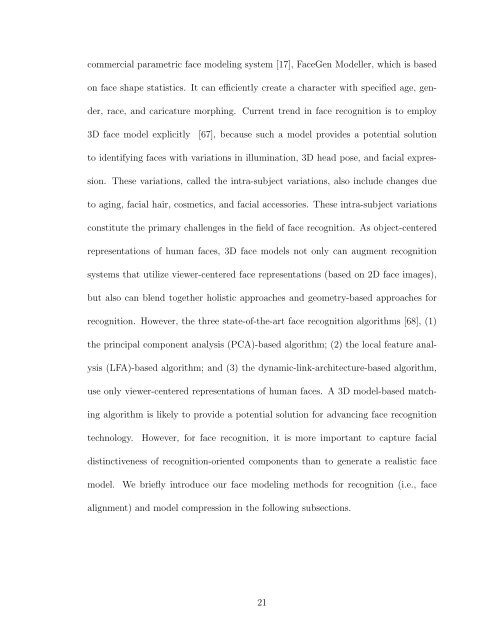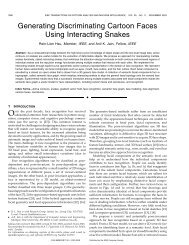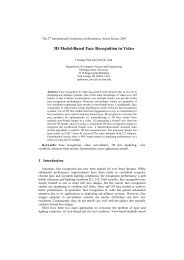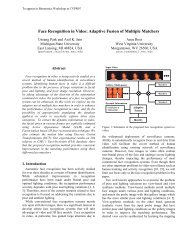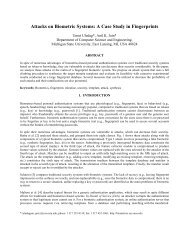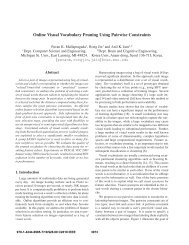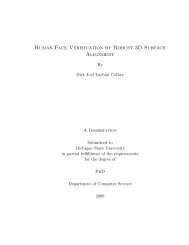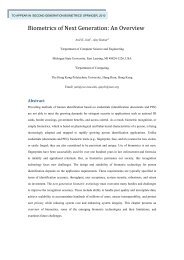Face Detection and Modeling for Recognition - Biometrics Research ...
Face Detection and Modeling for Recognition - Biometrics Research ...
Face Detection and Modeling for Recognition - Biometrics Research ...
Create successful ePaper yourself
Turn your PDF publications into a flip-book with our unique Google optimized e-Paper software.
commercial parametric face modeling system [17], <strong>Face</strong>Gen Modeller, which is based<br />
on face shape statistics. It can efficiently create a character with specified age, gender,<br />
race, <strong>and</strong> caricature morphing. Current trend in face recognition is to employ<br />
3D face model explicitly<br />
[67], because such a model provides a potential solution<br />
to identifying faces with variations in illumination, 3D head pose, <strong>and</strong> facial expression.<br />
These variations, called the intra-subject variations, also include changes due<br />
to aging, facial hair, cosmetics, <strong>and</strong> facial accessories. These intra-subject variations<br />
constitute the primary challenges in the field of face recognition. As object-centered<br />
representations of human faces, 3D face models not only can augment recognition<br />
systems that utilize viewer-centered face representations (based on 2D face images),<br />
but also can blend together holistic approaches <strong>and</strong> geometry-based approaches <strong>for</strong><br />
recognition. However, the three state-of-the-art face recognition algorithms [68], (1)<br />
the principal component analysis (PCA)-based algorithm; (2) the local feature analysis<br />
(LFA)-based algorithm; <strong>and</strong> (3) the dynamic-link-architecture-based algorithm,<br />
use only viewer-centered representations of human faces. A 3D model-based matching<br />
algorithm is likely to provide a potential solution <strong>for</strong> advancing face recognition<br />
technology.<br />
However, <strong>for</strong> face recognition, it is more important to capture facial<br />
distinctiveness of recognition-oriented components than to generate a realistic face<br />
model.<br />
We briefly introduce our face modeling methods <strong>for</strong> recognition (i.e., face<br />
alignment) <strong>and</strong> model compression in the following subsections.<br />
21


